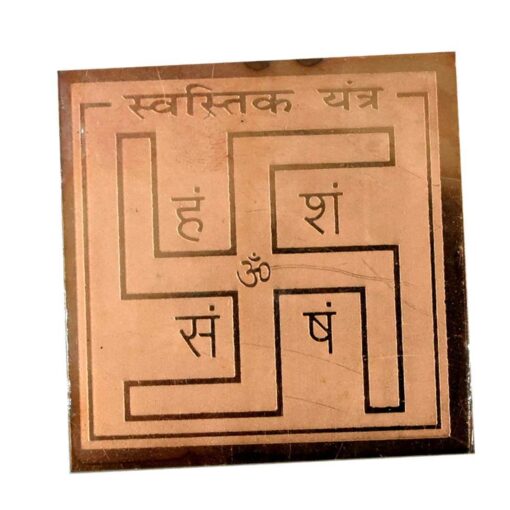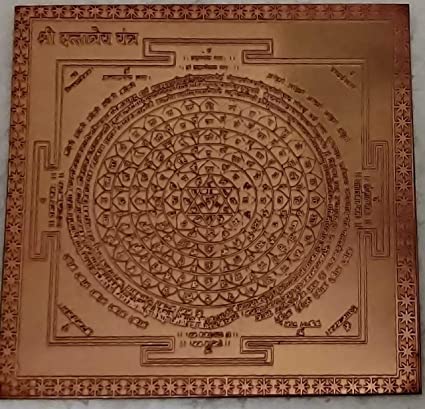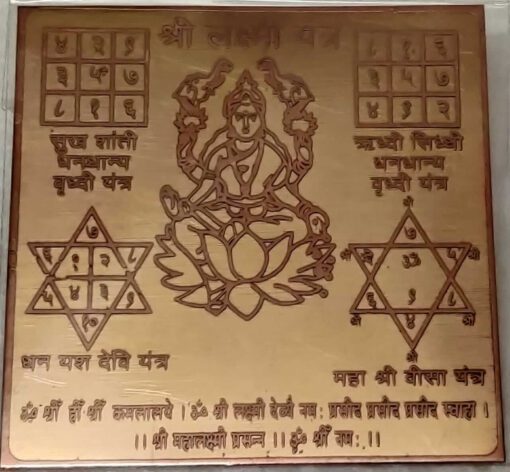Wavs
Swastik Yantra
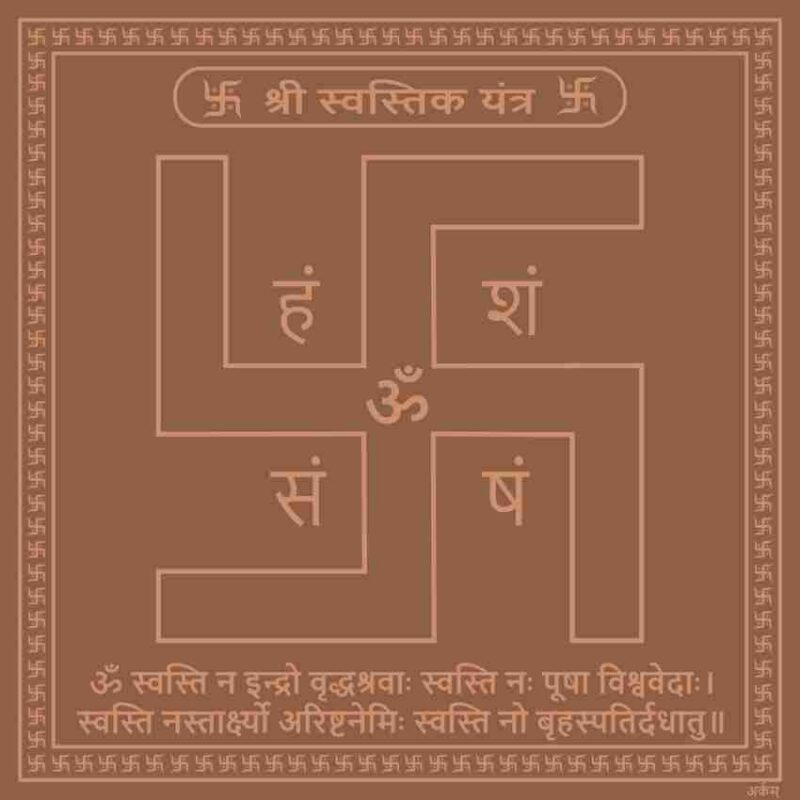
Swastik Yantra: An In-Depth Exploration
The Swastik Yantra is a sacred and revered symbol in Hindu, Jain, and Buddhist traditions, representing auspiciousness, prosperity, and spiritual well-being. This ancient symbol, which has been used for thousands of years, holds deep significance in various cultures and is believed to possess mystical and protective qualities. To fully appreciate the Swastik Yantra, it is essential to explore its origins, symbolism, design, and its role in spiritual practices.
Origins and Historical Significance
The Swastik Yantra is an ancient symbol that predates recorded history. Its origins are rooted in the Vedic traditions of India and can be traced back over 5,000 years. The word “Swastik” is derived from the Sanskrit term “svastika,” which means “well-being” or “good fortune.” The symbol is widely recognized and has been used in various cultures around the world, including Hinduism, Buddhism, and Jainism.
In Hinduism, the Swastik Yantra is considered a highly auspicious symbol, often associated with the deity Ganesha, who is known as the remover of obstacles and the god of beginnings. The symbol is frequently used in religious ceremonies, festivals, and rituals to invoke blessings and positive energy. Its use is also prominent in Jainism, where it represents the four auspicious aspects of life: the four stages of the soul’s journey to liberation. In Buddhism, the Swastik is seen as a symbol of the Buddha’s footprints and is used to represent eternity and the interconnectedness of all life.
Symbolism and Design
The Swastik Yantra consists of a geometric pattern based on the Swastik symbol, which is a cross with four arms of equal length, each bent at a right angle. The design of the Swastik Yantra is a powerful representation of cosmic principles and energy flow. Each element of the Yantra is imbued with symbolic meaning, contributing to its overall significance in spiritual practices.
-
Swastik Shape: The central element of the Swastik Yantra is the Swastik Yantra symbol itself, which can be oriented in two primary ways: clockwise (known as the “right-facing” Swastik) and counterclockwise (the “left-facing” Swastik). The right-facing Swastik Yantra is considered more auspicious and is associated with the positive flow of energy, prosperity, and divine blessings. The left-facing Swastik, although less common in Hindu traditions, is associated with the goddess Kali and represents transformation and the cyclical nature of life.
-
Four Arms: The four arms of the Swastik Yantra represent the four cardinal directions: north, south, east, and west. Each direction is associated with different aspects of life, such as wisdom, wealth, health, and harmony. The arms’ right-angle bends symbolize stability and the grounded nature of the universe.
-
Central Point: At the center of the swastik yantra is often a dot or a small geometric shape. This central point represents the origin of creation and the focal point of divine energy. It is the source from which all creation emerges and to which all creation returns.
-
Accompanying Symbols: The Swastik Yantra may include additional symbols and elements, such as lotus petals, circles, or other geometric shapes. These elements enhance the Yantra’s protective and energizing qualities, contributing to its role as a powerful tool for spiritual practice.
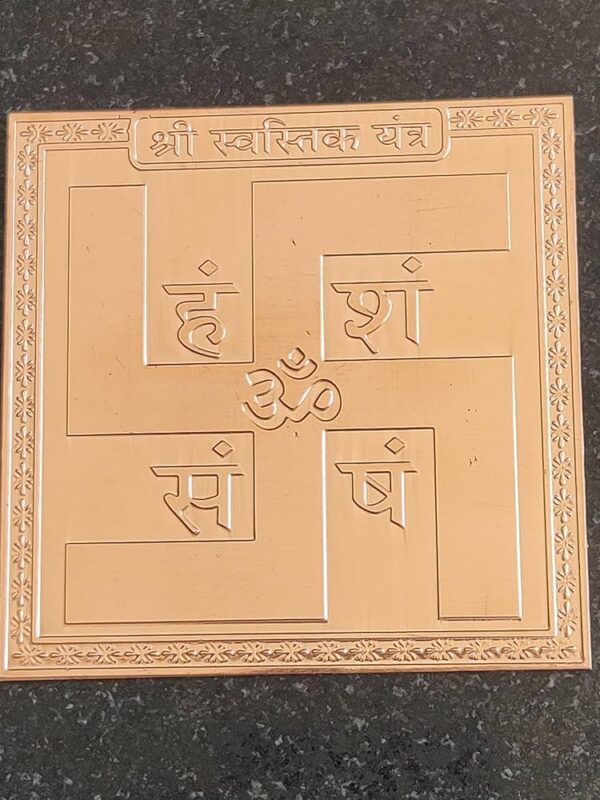
Role in Spiritual Practices
The Swastik Yantra is used in various spiritual practices and rituals to harness its positive energy and benefits. Its applications span across personal, familial, and communal contexts, highlighting its versatility and significance in spiritual life.
-
Meditation and Visualization: Practitioners often use the Swastik Yantra as a focal point for meditation and visualization exercises. By concentrating on the Swastik Yantra, individuals can align their energies with its auspicious vibrations and enhance their spiritual growth. The geometric precision of the Yantra helps to calm the mind and focus spiritual intentions.
-
Rituals and Offerings: The Swastik Yantra is frequently used in rituals and ceremonies to invoke blessings, protection, and prosperity. It is often drawn or placed on altars during religious ceremonies, where offerings are made to deities and prayers are recited. The Swastik Yantra presence is believed to attract positive energy and dispel negativity.
-
Home and Temple Decoration: The Swastik Yantra is commonly used in the decoration of homes and temples to create an auspicious environment. It is often painted, carved, or displayed as part of a larger design. Its placement is carefully considered to ensure that it aligns with principles of Vastu Shastra, the ancient Indian science of architecture and design.
-
Amulets and Talismans: Small Swastik Yantra are often made into amulets or talismans that individuals can carry or wear. These objects are believed to provide personal protection, attract good fortune, and enhance overall well-being.
The Swastik Yantra in Contemporary Context
In contemporary times, the Swastik Yantra continues to hold significant cultural and spiritual value. Despite its historical and cultural complexities, it is celebrated for its positive attributes and its role in enhancing personal and communal well-being.
-
Cultural Awareness: In an increasingly globalized world, the Swastik Yantra is recognized and respected across various cultures. Its use in spiritual and cultural contexts fosters greater understanding and appreciation of its significance.
-
Educational and Research Interest: Scholars and researchers continue to study the Swastik Yantra to uncover its historical roots, cultural impact, and spiritual significance. This ongoing research contributes to a deeper understanding of the symbol’s role in human history and spiritual traditions.
-
Modern Spirituality: In modern spiritual practices, the Swastik Yantra is embraced for its ability to bridge ancient wisdom with contemporary spiritual needs. It serves as a reminder of the interconnectedness of all life and the enduring quest for harmony and prosperity.

